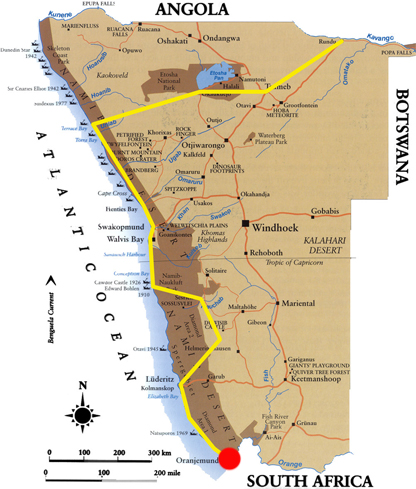About thirty years ago, Albi stood at the edge of a vast and indescribable landscape and envisioned a different future for the endless grasslands, ochre dunes and jagged peaks that he saw in front of him. Albi had decided to do the impossible; buy up scores of overgrazed and under-productive livestock farms and rehabilitate them into a single continuous natural habitat essential for protecting the biodiversity of a unique and fragile ecosystem.
Lucky for us, Albi’s prayers and perseverance paid off and he succeeded in creating one of the largest private nature reserves in southern Africa; the NamibRand Nature Reserve and probably my favourite place on earth.
The moment you step into the NamibRand Family Hideout it feels like coming home. The rustic and historic farmhouse used to be inhabited by a family of Karakul sheep farmers and lay deserted for many years till it was converted into a self-catering getaway for desert lovers. It is a comfortable yet basic place with a gas stove and fridge, solar geyser and lights. During the day the old stone floors are cool under your feet and at night the wide walls that have been baked by the desert sun for close on a hundred years keep you warm.
There is a profusion of life at Namibrand; in the house and out on the dunes. A fat and self-satisfied gecko lives under the kitchen cupboard, a cheeky bat eared fox may chance its luck and raid the dustbin, a rock kestrel hunts the Namaqua Sandgrouse at the waterhole and the comical wing flicks of the Familiar Chat never cease to amuse.
Herds of Oryx and Springbok come down each day to drink at the waterhole outside the farmhouse and when one walks the dunes they are covered in spoor of insects, reptiles and mammals. I always wish I knew more about spoor when on the dunes – like a blind person trying to learn braille, I find myself touching the tracks hoping to make more sense of what creature could have possibly made them.
Every morning we wake early and walk to the dunes in the dark with our torches and wait for the sun to bath the landscape in colour. We do the same each evening with the moon. There is something profoundly special about having the desert all to yourself.
Mysterious bare circles in the sand dot the landscape along the edge of the Namib Desert. These bare patches have been named “fairy circles.”
While numerous scientists have researched these circles, no one has yet been able to ultimately determine their cause or purpose. Various theories of their origin have been suggested, including euphorbia poisoning, animal dust baths, meteor showers, termites and underground gas vents. In the modern world of advanced research, innovative technology and information networks, it is refreshing to know that Nature can still keep some of her secrets.
You can add to your experience on NamibRand by adopting a fairy circle. All funds raised through this program go directly to the NamibRand Conservation Foundation. For a donation of R500 you can adopt a circle for yourself or someone else. A numbered disk will be placed in your specially chosen circle and you will receive a certificate acknowledging your donation and recording the exact GPS-coordinates of your fairy circle.
For more information contact:


























































